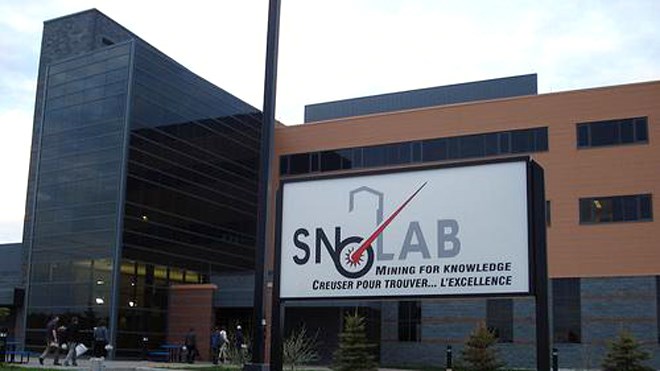Doug Hallman's habit of religiously checking the Nobel Prize website for the latest winners paid off Tuesday morning.
Hallman, a professor emeritus of physics and astronomy at Laurentian University, worked closely with Arthur B. McDonald, director of the Sudbury Neutrino Laboratory (SNO), who was awarded the Nobel Prize for physics, along with Japan's Takaaki Kajita, for their pioneering work on subatomic particles called neutrinos.
“We're just so excited and elated about the fact that the project has been awarded,” said Hallman.
Through their experiments deep underground in Inco's (at the time) Creighton Mine, McDonald and his team solved the “neutrino problem.”
Researchers had long noticed there didn't appear to be enough neutrinos coming from the sun, by the time the particles formed in the sun's core reached the Earth.
By observing neutrinos in heavy water underground — away from the interference of cosmic rays — McDonald and the SNO team discovered many neutrinos change “flavours” by the time they reach the Earth.
The subatomic particles' ability to transform, in turn, proved they had mass.
“That hadn't really been part of the standard model of physics before,” said Nigel Smith, the director of SNOLAB.
Due to the success of McDonald's original SNO experiment, several universities and other research partners formed the underground SNOLAB laboratory, to further study neutrinos and their behaviour.
McDonald fundamentally changed scientists' understanding of the basic theory on the particles and how they interact – called the standard model.
That new understanding has opened the door for a greater understanding of the Big Bang and the mysteries of the universe's early existence.
“Who can tell what future generations will do with this knowledge?” Smith said.
Beyond expanding human knowledge, the SNO experiment also helped foster a new generation of scientists making their own strides forward around the world.
The particle detectors built to observe the neutrinos work on the same principles as medical imaging devices like MRIs and PET scanners.
Smith said progress to make their instruments more sensitive and accurate can be directly applied to other fields.
But most of all, recognition from the Nobel Prize committee has helped put the project, and Sudbury on the world map, and in the public consciousness.
“I certainly hope people in Sudbury are very proud of the research that has happened here,” Smith said. “It's not often one hears about a Nobel Prize in your backyard.”
For Christine Kraus, the Canada Research Chair in Particle Astrophysics at Laurentian, McDonald's recognition did more than put Sudbury on the map.
“It recognizes this field is very important and has accomplished a lot,” she said. “It puts Canada on the map as well.”
Join Sudbury.com+
- Messages
- Post a Listing
- Your Listings
- Your Profile
- Your Subscriptions
- Your Likes
- Your Business
- Support Local News
- Payment History
Sudbury.com+ members
Already a +member?
Not a +member?
Sign up for a Sudbury.com+ account for instant access to upcoming contests, local offers, auctions and so much more.
